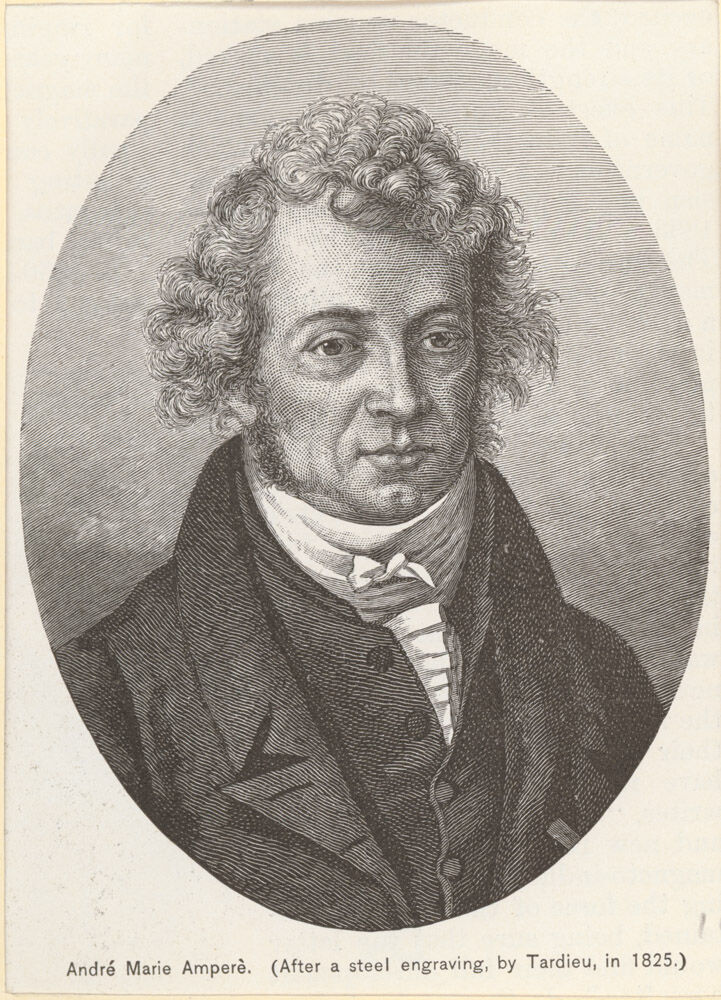André-Marie Ampère was a French physicist and chemist. He can be considered the founding father of electromagnetism. He developed the vocabulary used in electricity and introduced new terms such as voltage and current.

A self-taught physicist, he invented a number of experimental devices and measuring apparatus, including the astatic compass, the basis of the galvanometer, the solenoid, the electric telegraph and the electromagnet. At the end of his life, he turned his attention to the philosophy of science. Ampère, who died almost forgotten, left his name to the ampere, the unit of electric current.
-
1775: André-Marie Ampère is born in Lyon on January 20.
-
1788: At the age of 13, he submits a mathematics dissertation to the Académie des sciences, belles-lettres et arts de Lyon.
-
1802: He published Considérations sur la théorie mathématique du jeu (Considerations on the mathematical theory of the game), which led to his appointment as mathematics teacher at the Lycée de Lyon. Six years later, he was appointed Inspector General of the Imperial French University, then Professor at the École Polytechnique.
-
1814: His work in chemistry is crowned with success: he makes the discovery of simple compounds (chlorine and fluorine) and formulates the Avogadro-Ampère law. He was subsequently elected to the Paris Academy of Sciences.
-
1820: Following Oersted's discovery of electromagnetism, he studied the relationship between electricity and magnetism.
-
1827: He became famous with the publication of his treatise Théorie mathématique des phénomènes électro-dynamiques uniquement déduite de l'expérience.
-
1836 : On June 10, at the age of 61, he died in the infirmary of the Lycée Thiers in Marseille, while on an inspection tour. He is buried there.
-
1881: His name is associated with the ampere, the unit of electrical intensity.